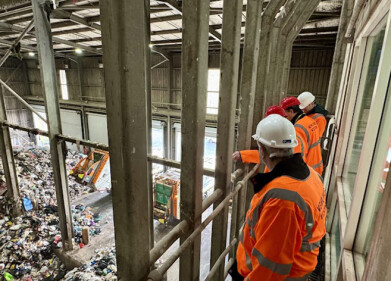Waste management
Should We Stop Balloon Releases?
Jun 07 2019
Balloons are often released at spectacles and celebrations all over the world, whether it be personal events like weddings and birthdays or more communal occasions such as sporting matches or cultural festivities. While they might make for a pretty picture, their aesthetic value is all too fleeting and their adverse effects on the environment can be dangerously long-lasting.
With that in mind, concerned campaigners have been petitioning for balloon releases to be prohibited in many countries around the world. While their complaints have been given short shrift by lawmakers until now, a growing mainstream awareness of environmental responsibility may mean that a ban could be forthcoming in the future. Here are some reasons why outlawing balloon releases could make sense for our planet’s wellbeing:
Wildlife impact
The old saying is certainly true when it comes to balloons: what goes up will inevitably come crashing back down to earth. The plastic and string waste left behind once a balloon has run its course can land almost literally anywhere, sometimes miles from where it was first released. Wildlife in the area can mistake this trash for food and ingest it.
If such an occurrence comes to pass, the animal in question may experience damage to their internal organs, nutritional deficiencies, inability to eat or even death. As well as impacting individual creatures, ingested plastic in prey can also be swallowed by larger creatures, infiltrating the food chain and potentially even reaching humans.
Marine pollution
Much of that litter will inevitably find its way into our oceans and seas, even if the initial release point was thousands of miles from the coast. Indeed, the ability of plastic pollution to pervade all parts of our planet is remarkable; recently, evidence of plastic debris was found at the bottom of the Mariana Trench, which is the deepest known point on Earth.
Plastic does not degrade completely in a marine environment, but it does break down into miniscule pieces known as microplastics, which are potentially even more dangerous than regular plastics. This is because the chance of them being ingested is far higher than larger items, thus increasing the likelihood that they could injure or kill marine life.
Power outages
One of the under-publicised consequences of balloon releases is the effect they have on national power grids. When a balloon made from metal or foil comes into contact with power lines, it has a disrupting effect on conductivity and power supplies. Indeed, some utility companies in the United States indicate that stray balloons account for as much as 20% of their total power outages.
At a time when the global population is in constant need of more power, and when concerns about the damaging effects of fossil fuels on our environment are higher than ever, efficiency must be paramount. Any shortcomings in this area, even smaller ones caused by balloon releases, should be eradicated to optimise our energy consumption and reduce our collective carbon footprint as much as possible.
Events
Apr 15 2025 Moscow, Russia
Apr 21 2025 Shanghai, China
May 11 2025 Vienna, Austria
May 18 2025 Algiers, Algeria
23rd International Water Management Exhibition
May 20 2025 Prague, Czech Republic














